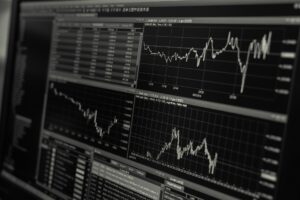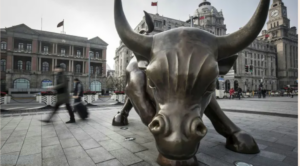Resume af teksten:
Den Schweiziske Nationalbank (SNB) har fastholdt sin rentepolitik på 0%, da inflationen forbliver lav, og økonomiske risici øges. Inflationen steg til 0,2% år-til-år i august, mens importvarer oplevede et prisfald på 1,3% år-til-år, hovedsageligt på grund af lavere energipriser og en stærk schweizerfranc. Den økonomiske udsigt er blevet værre, især grundet 39% toldsatser pålagt af USA på schweizisk eksport. SNB forudser nu en BNP-vækst på knap 1% i 2026, men har ikke ændret sine inflationforventninger for de kommende år. Selvom risikoen for deflation er til stede, forventer SNB ikke yderligere rentenedsættelser, da dette kunne føre til negative renter. Deres holdning over for en stærk schweizerfranc er blevet mere afslappet, og SNB forbereder sig kun på at intervenere i valutamarkedet, hvis det bliver nødvendigt.
Fra ING:
The Swiss National Bank (SNB) kept its policy rate unchanged at 0%, as inflation remains very low and economic risks mount. Despite a weakening growth outlook, the SNB is avoiding further easing for now

SNB Chairman Martin Schlegel arrives at a media briefing on 25 September 2025
Status quo at the SNB
As expected, the Swiss National Bank (SNB) left its policy rate unchanged at 0%, with consumer price inflation running at just 0.2% year-on-year in August. Despite the strength of the Swiss franc, the SNB refrained from labelling it a risk or describing it as “highly valued,” a term it had used in previous communications. The relatively low inflation in Switzerland compared to other countries is helping to keep the real exchange rate relatively stable, even as the nominal franc appreciates, likely reassuring the SNB.
Recent comments from the SNB suggest a more relaxed stance on exchange rate developments. Still, the central bank has reiterated its readiness to intervene in the foreign exchange market if necessary. No changes were made to the remuneration of sight deposits held by banks at the SNB, which continue to earn interest at the policy rate up to a defined threshold, and 25 basis points below that rate beyond the threshold.
Inflation remains subdued
Inflation ticked up from -0.1% in May, but underlying price pressures remain weak and close to the lower bound of the SNB’s target range of 0-2%. The main drag comes from imported goods, which make up 23% of the consumer basket and saw prices fall 1.3% year-on-year – largely due to lower energy prices (-8.3%) and the strong franc. Domestic goods prices rose by 0.6% year-on-year, showing slightly more momentum.
A deteriorating economic outlook
Economic risks have increased since the SNB’s last meeting, notably due to the 39% tariffs imposed by the United States on Swiss exports. The SNB described these tariffs as “a major challenge for affected companies” and warned they could dampen activity. However, the impact is expected to be concentrated in export-oriented sectors, with services still performing relatively well.
The SNB now forecasts GDP growth of “barely 1%” in 2026. Under normal circumstances, such a downgrade might warrant a downward revision of inflation forecasts and potentially open the door to rate cuts. But the SNB appears reluctant to move in that direction. It maintains that “the inflation trend has hardly changed since Q2” and kept its inflation projections unchanged at: 0.2% for 2025, 0.5% for 2026, and 0.7% for 2027. These stable forecasts underpin the decision to hold rates.
With rates already at 0%, the SNB noted that “the bar is high” for further cuts, which would push rates into negative territory. During its press conference, the SNB emphasised that a move into negative rates would not be equivalent to a “normal” rate cut.
Risks tilted to the downside
In our view, there’s a risk that inflation could be undershooting the SNB’s forecasts in the coming months. In August, both imported and domestic goods prices fell by 0.1% month-on-month, and service prices also declined. With global energy prices still low and Swiss growth slowing, annual inflation could edge closer to 0% or even turn negative again.
At this stage, it’s clear the SNB would prefer to avoid returning to negative rates, and we do not expect further rate cuts. However, the door to future easing remains ajar. A sharper-than-expected deterioration in the economic outlook could quickly bring rate cuts back into the conversation.
Charlotte de Montpellier
SNB learns to live with strong franc
Conspicuous by its absence in today’s update is any greater concern over Swiss franc strength. There’s no description of the franc being “highly valued” or the SNB being prepared to intervene more strongly in FX markets. That may well be down to the realpolitik of a more interventionist US administration wary of trading partners limiting currency strength for trade gain.
EUR/CHF is largely unchanged on today’s update, and our view is that it will continue to trade around these 0.92/93 levels until a more bullish eurozone/ECB story emerges in 2026. If anything, the SNB’s lack of concern over the strong franc – even as the inflation-adjusted franc trades up at the highs – is a mildly bearish development for EUR/CHF today.
Chris Turner
Hurtige nyheder er stadig i beta-fasen, og fejl kan derfor forekomme.



